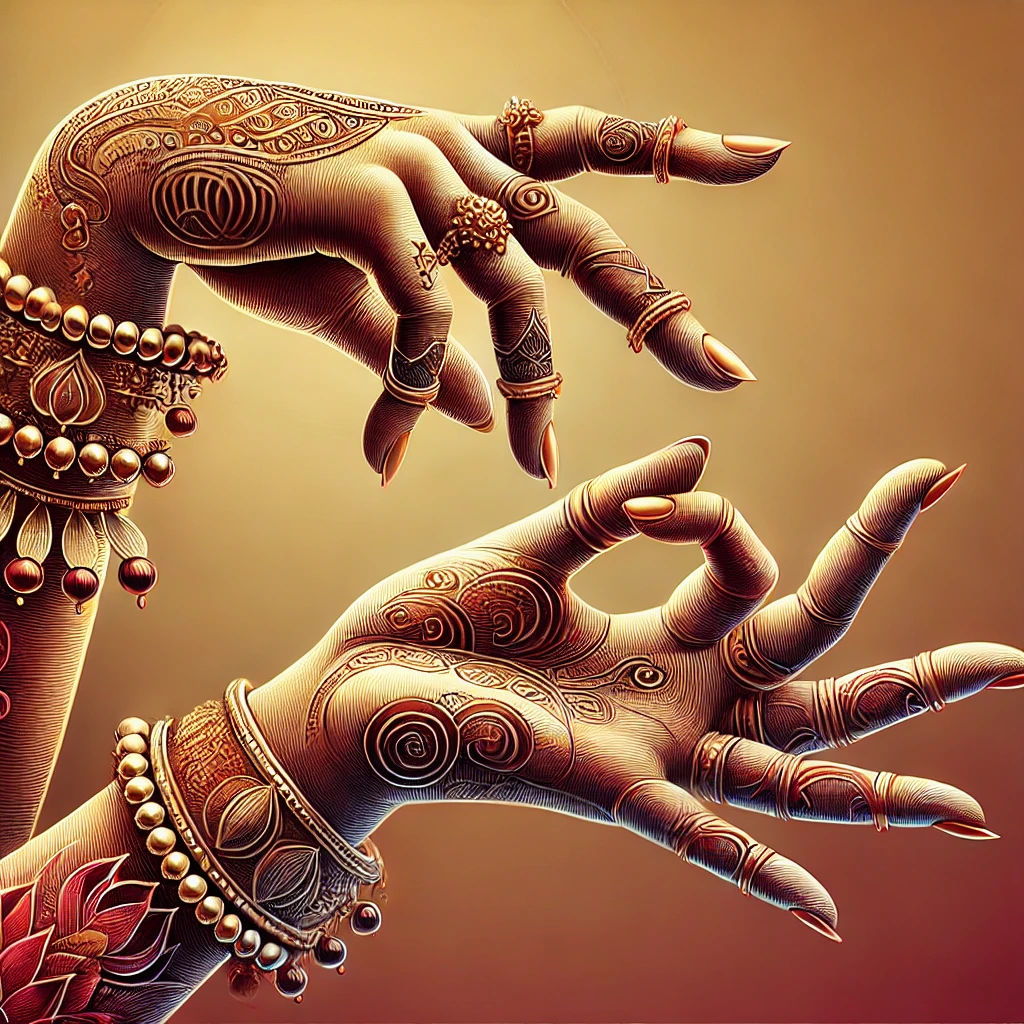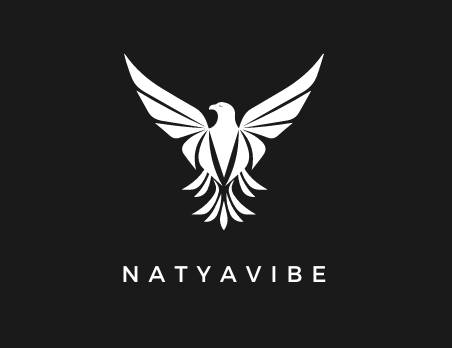Have you ever watched a Bharatanatyam performance and felt the magic of the dancer’s hands telling stories, showing emotions, and expressing devotion through graceful gestures? These hand gestures, called “hasta mudras,” are more than just artistic movements. They create a special language that connects the dancer to the audience, sharing deep feelings, messages of the divine, and beautiful stories. In this post, we will explore the world of Bharatanatyam hand mudras, understanding what they mean, what they symbolize, and how they bring the dance to life.
Table of Contents
What Are Bharatanatyam Hand Mudras?
Bharatanatyam, one of the oldest and most respected classical dance forms of India, is famous for its detailed footwork, expressive facial gestures, and—of course—the beautiful hand mudras. But what exactly are these hand mudras? The word “mudra” means symbolic hand gestures that convey different meanings. In Bharatanatyam, each hand gesture represents something specific, like gods and goddesses, natural elements such as the sun and moon, or even animals. These mudras are combined with facial expressions, body movements, and footwork to tell a full and meaningful story.
Bharatanatyam hand mudras are an essential way for dancers to express emotions and tell stories without using words. These gestures allow the dancer to transform complex tales into simple, visual forms that connect powerfully with the audience. Each mudra adds depth and meaning, making the performance more engaging and emotionally resonant.

The Significance of Bharatanatyam Hand Mudras
Why are Bharatanatyam hand mudras so important? The beauty of this dance form lies in the intricate way the body, especially the hands, comes together to form a conversation. In Bharatanatyam, every movement is a deliberate act of storytelling, and hand mudras are at the center of this. These gestures are not just aesthetic; they carry spiritual and cultural meanings that connect the dancer to the divine.
For instance, the “Anjali” mudra, where the palms are pressed together, is a symbol of respect and prayer. It is often used to begin and end performances, signifying reverence and humility. On the other hand, the “Pataka” mudra, where the hand is held in a flat position with fingers together, is used to represent a flag, a river, or even a deity. This gesture, along with many others, helps create a visual map of the story being told.
How Bharatanatyam Hand Mudras Enhance Expression
Imagine you’re watching a performance where the dancer tells the story of Lord Rama. While the dance moves and facial expressions express emotions, it’s the Bharatanatyam hand mudras that breathe life into the narrative. Each gesture is like a word in a language, and when these words come together, they form sentences of meaning.
Take the “Trishula” mudra (the gesture of holding a trident) as an example. This hand gesture represents the mighty weapon of Lord Shiva, a symbol of power and destruction. When performed with the appropriate facial expressions, the audience can immediately feel the strength and ferocity of Shiva’s presence.
In contrast, a delicate mudra like “Chandrakala” (the crescent moon) conveys peace, tranquility, and beauty. These contrasting hand gestures not only help the dancer express the emotions of a story but also evoke a range of feelings in the viewer, creating a deeper connection to the performance.
The Role of Bharatanatyam Hand Mudras in Devotional Dance
In Bharatanatyam, many dances are devotional in nature, meant to offer reverence to gods and goddesses. Bharatanatyam hand mudras are deeply connected to spirituality, and each gesture holds a sacred meaning. They transcend mere physical movement and become acts of devotion and prayer. For instance, the “Abhaya” mudra, which is the gesture of reassurance with an open hand, is often used to depict Lord Vishnu’s protection.
These mudras help invoke the divine presence during performances. For the dancer, the act of performing these sacred gestures becomes an offering to the gods, elevating the dance from an art form to an act of devotion.
Bharatanatyam Hand Mudras: A Universal Language
One of the most fascinating aspects of Bharatanatyam hand mudras is their universal nature. While these gestures are rooted in the cultural context of India, their meanings are often universal. The “Katarimukha” mudra, symbolizing a sword, can easily be understood across cultures as representing strength and power. Similarly, the “Kapitta” mudra, resembling a closed fist, is used to depict a variety of meanings such as a flower, a raincloud, or a weapon, showing the diversity and depth of this language.
As Bharatanatyam continues to spread across the world, the beauty of these hand gestures remains one of its most accessible and captivating elements. They allow dancers to connect with global audiences, transcending language barriers and creating a shared emotional experience.
Conclusion: The Language That Speaks to the Soul
Bharatanatyam hand mudras are not just an essential part of the dance; they are the heart of its language. These hand gestures help dancers express emotions, tell stories, and connect with the audience on a spiritual level. Whether you’re a dancer, a viewer, or just curious about the art form, understanding the power of Bharatanatyam hand mudras can deepen your appreciation for this beautiful tradition.
Have you ever watched a Bharatanatyam performance where the hand mudras left you in awe? Share your thoughts in the comments below, and let’s keep exploring the transformative power of dance together. If you want to know more about Bharatnatyam you can visit NatyaVibes.

